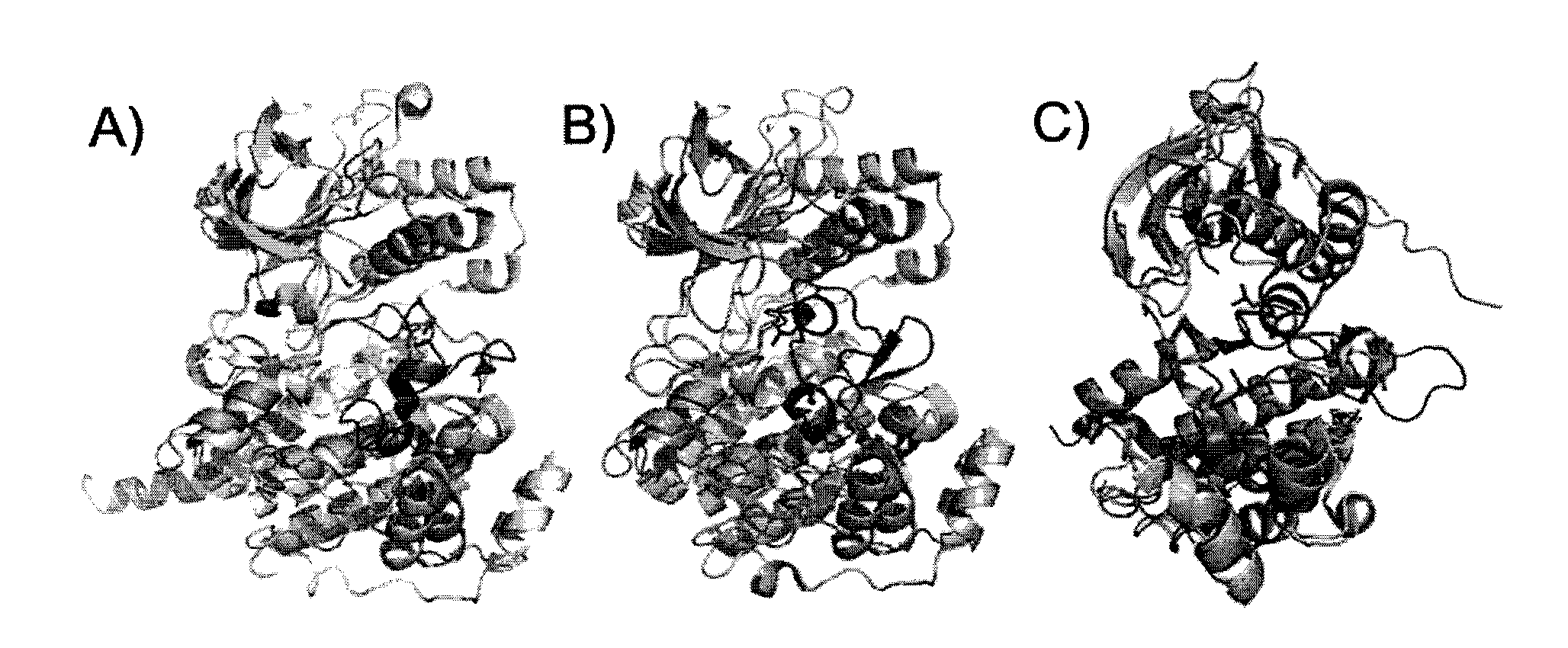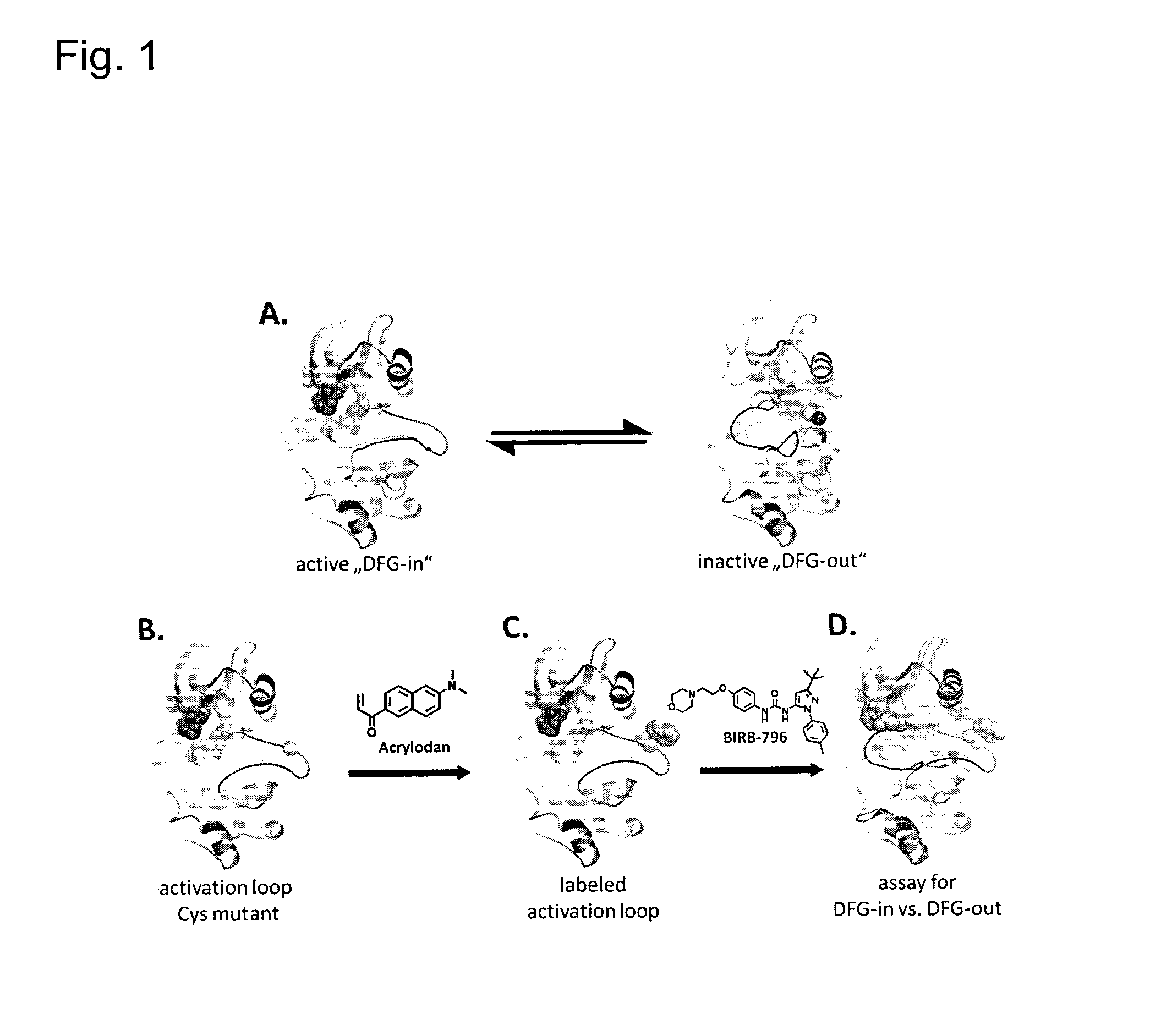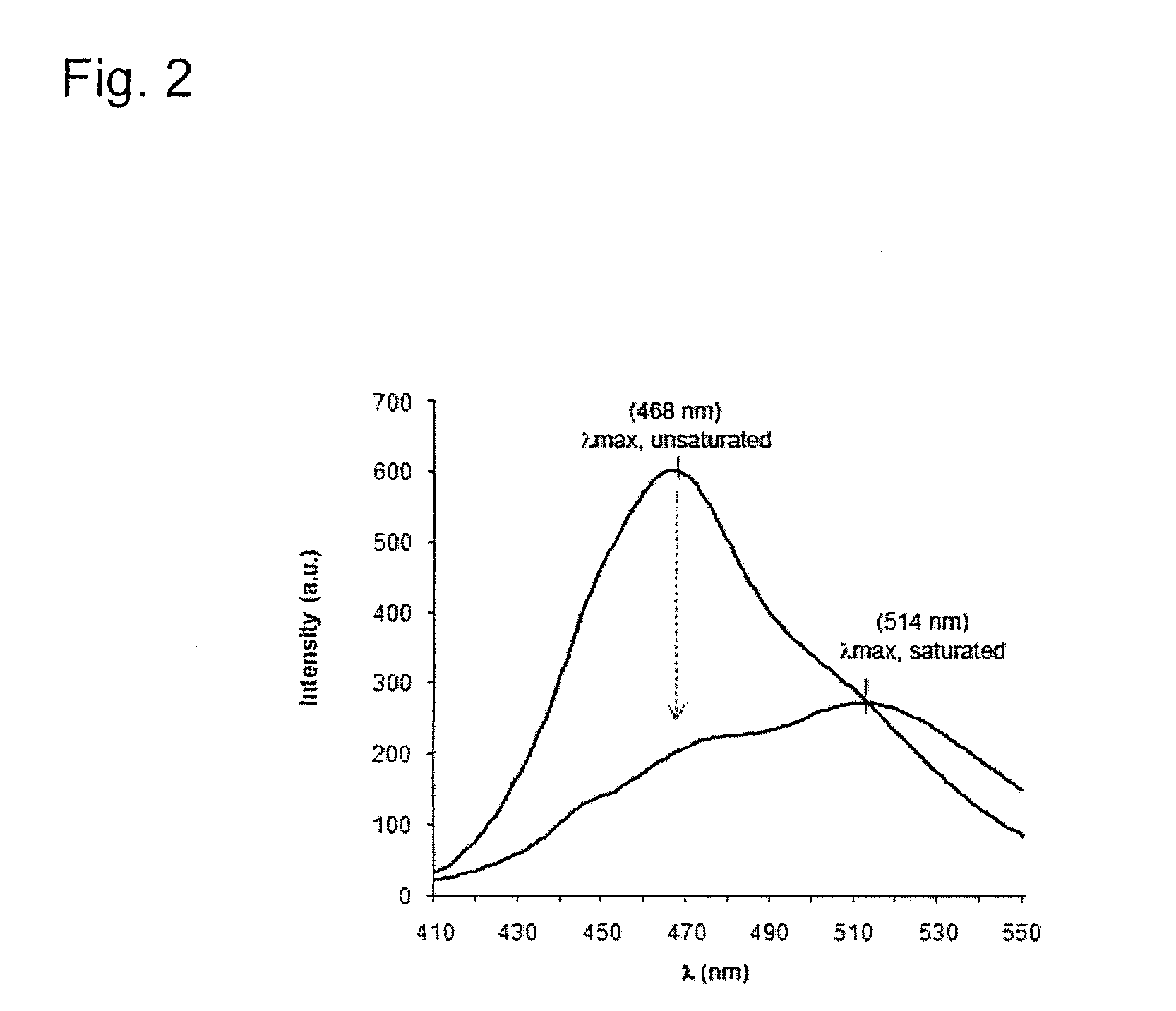Fluorescently Or Spin-Labeled Kinases For Rapid Screening And Identification Of Novel Kinase Inhibitor Scaffolds
a kinase inhibitor and scaffold technology, applied in the field of kinase, can solve the problems of low specificity of such inhibitors, inability to detect the binding site of compounds, and inability to quickly and feasible high-throughput screening methods for the identification of type i, ii and iii inhibitors, and achieve the effect of not interfering with the stability of the kinas
- Summary
- Abstract
- Description
- Claims
- Application Information
AI Technical Summary
Benefits of technology
Problems solved by technology
Method used
Image
Examples
example 1
Selection of a Suitable Kinase
[0206]Applicants chose to work with p38α to develop this assay for the following reasons: i) the abundance available of structural information, ii) the availability of crystal structures in both its active and inactive conformations (FIG. 1A.) and iii) the availability of tight binding Type II & III allosteric inhibitors. In the first step, the crystal structures of p38α were closely examined to identify suitable fluorophore attachment sites that would detect allosteric binders. Candidate residues for this mutation must be solvent exposed to enable the attachment of a fluorophore by Michael addition, and exhibit significant movement upon ligand binding. Care was also taken to not choose residues that are critical to maintaining protein stability, catalytic activity or residues in the vicinity of known phosphorylation sites.
[0207]A position near the N-terminal end of the activation loop was selected and subsequently mutated into a cysteine residue (FIGS....
example 2
Protein Labeling and Fluorescence Characterization
Protein Labeling
[0208]An N-terminal GST-p38α construct containing 4 total mutations (2 cysteine→serine, and the introduction of a cysteine for labeling) was transformed into the BL21(DE3) E. coli strain, overexpressed, purified by affinity, anion exchange and size exclusion chromatography and the pure protein was subsequently used for labeling. Protein and free acrylodan were combined at a 1:1.5 ratio and allowed to react in the dark overnight at 4° C. The conjugated protein (ac-p38α) was concentrated, aliquoted and frozen at −20° C. Mono-labeling of 100% of the protein was verified by ESI-MS. Confirmation of the correctly labeled cysteine is currently being performed by analyzing the tryptic fragments of unlabelled and labeled p38α following a combination of HPLC and ESI-MS or MALDI.
Fluorescence Characterization
[0209]Following labeling, the fluorescent properties of the probe were characterized and initial experiments were carried o...
example 3
Kinase Expression & Purification
[0211]The p38α construct was cloned into a pOPINE vector and was transformed as an N-terminal His-tag construct with Precision Protease cleavage site into BL21(DE3) E. coli. Cultures were grown at 37° C. until an OD600 of 0.6, cooled in 30 min to RT and then induced with 1 mM IPTG for overnight (˜20 hrs) expression at 18° C. while shaking at 160 rpm. Cells were lysed in Buffer A (50 mM Tris pH 8.0, 500 mM NaCl+5% glycerol+25 mM imidazole) and loaded onto a 30 mL Ni-column (self-packed), washed with 3 CV of Ni Buffer A and then eluted with a 0-50% linear gradient using Ni Buffer B (Ni Buffer A+500 mM imidazole) over 2 CV. The protein was cleaved by incubating with PreScission Protease (50 μg / mL final concentration) in a 12-30 mL capacity 10-MWCO dialysis cassette (Thermo Scientific) overnight at 4° C. in Dialysis Buffer (50 mM Tris pH 7.5, 5% glycerol, 150 mM NaCl, 1 mM EDTA, 1 mM DTT). The protein was then centrifuged for 15 min at ˜13,000 rpm to remo...
PUM
| Property | Measurement | Unit |
|---|---|---|
| mass | aaaaa | aaaaa |
| mass | aaaaa | aaaaa |
| mass | aaaaa | aaaaa |
Abstract
Description
Claims
Application Information
 Login to View More
Login to View More - R&D
- Intellectual Property
- Life Sciences
- Materials
- Tech Scout
- Unparalleled Data Quality
- Higher Quality Content
- 60% Fewer Hallucinations
Browse by: Latest US Patents, China's latest patents, Technical Efficacy Thesaurus, Application Domain, Technology Topic, Popular Technical Reports.
© 2025 PatSnap. All rights reserved.Legal|Privacy policy|Modern Slavery Act Transparency Statement|Sitemap|About US| Contact US: help@patsnap.com



